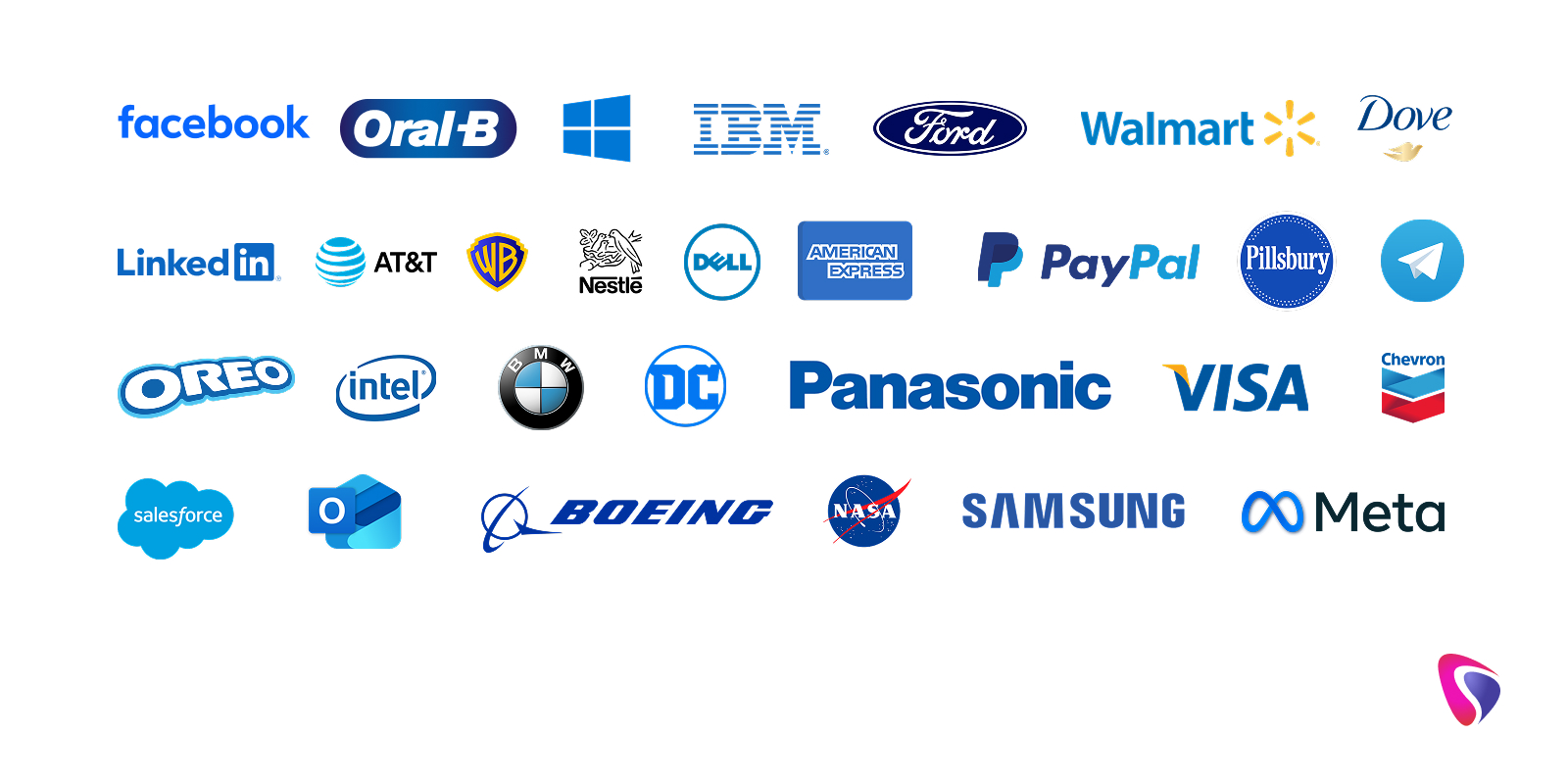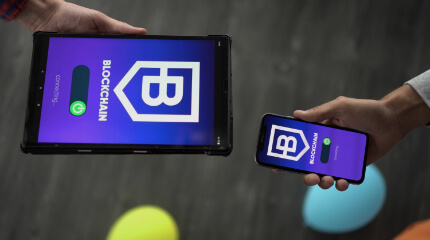
We’ve all been there, staring at a blank screen, a blinking cursor mocking us, and creativity nowhere in sight. Whether you’re designing a landing page or crafting the next-gen mobile app, that initial spark of web design inspiration or app design idea can feel frustratingly out of reach. And when deadlines are looming, waiting for inspiration to magically strike is a luxury you simply can’t afford.
In the fast-moving world of digital design, speed matters. Clients expect fresh concepts. Users crave modern, intuitive interfaces. And designers? We just want to build something that not only looks great but also feels right. That’s where finding fast design inspiration becomes a true superpower, not just a creative luxury.
But here’s the thing: inspiration isn’t random. It can be sparked, summoned, and even systemized. That’s why we’ve created a foolproof method to help you tap into that creative flow without wasting hours scrolling endlessly.
Introducing the “SECRET” formula—a powerful, strategic approach that helps designers and developers find inspiration quickly and effectively, without falling into the trap of copying others. Each letter stands for a key action that fuels creativity and speeds up your design process:
- S – Scan Design Showcases
- E – Explore Outside Your Niche
- C – Collect & Categorize
- R – Reverse Engineer Designs
- E – Experiment Without Pressure
- T – Tap Into Trends (But Don’t Copy)
Ready to break through the creative block and find the inspiration you need, fast? Let’s dive into the SECRET.
S – Scan Design Showcases: Where Great Ideas Begin
Nowadays, lots and lots of inspiration can be taken for web and app design by way of curated design showcases. Think of these platforms as a museum on the web-attribute interfaces, unusual UX patterns, actual projects, etc. But the real thing to do is to not only scroll through them but to study as well.
Why Curated Inspiration Works
Design showcase sites do more than just look pretty. They:
- Reflect current design trends in real-time
- Highlight practical, real-world use of UI/UX patterns
- Offer insights into how top designers solve layout, navigation, and user flow challenges
In short, they give you a shortcut to what's working—and what's inspiring—in today's design landscape.
Top Platforms to Explore
Here are some gold mines of inspiration you should absolutely bookmark:
- Dribbble – Great for UI elements, mobile screens, and creative concepts
- Behance – Perfect for detailed case studies and full project walkthroughs
- Awwwards – A showcase of award-winning websites and cutting-edge UX/UI
- Mobbin – A curated collection of real-world mobile UI patterns
- Pttrns and UI Movement – Great for exploring specific components like onboarding, forms, and menus
Each of these sites is packed with thousands of ideas—but remember, your job isn’t just to collect pretty pictures.
Don’t Scroll. Analyze.
Here’s how to get the most out of these platforms:
- Ask "Why?" not just "Wow!" – What makes this design work? Why does this layout feel balanced?
- Break it down – Look at typography, spacing, color use, and hierarchy.
- Think user-first – How would this design feel if you were the end user?
Turn passive scrolling into active discovery. By approaching these platforms with intention, you’ll start to see what works and why—and that’s the real secret behind fast, effective inspiration.
E – Explore Outside Your Niche: Unexpected Places, Unforgettable Ideas
If you’re only drawing web design inspiration from other websites or app interfaces, you’re playing it safe, and safe rarely stands out. Some of the most unique and memorable app design ideas don’t come from tech at all. They come from the world outside your screen.
Yes, great design is everywhere. You just need to know where to look.
Why Step Outside Your Comfort Zone?
Designers often fall into the trap of recycling the same visual patterns seen across Dribbble or Behance. While those are excellent resources, they can also create an echo chamber of similar-looking designs. Exploring outside your niche gives you:
- Fresh perspectives
- Unexpected color combinations
- New layout inspirations
- Ideas that feel original, not overdone
Inspiration that comes from a different world often makes your work feel different in the best possible way.
Non-Design Sources of Creativity
Here are a few unconventional (yet incredibly rich) sources of design inspiration:
- Nature – Observe how colors blend, how symmetry and chaos coexist. A forest can teach you more about contrast than any UI course.
- Architecture – Look at how buildings use structure, negative space, flow, and form. Think of layouts like rooms, with purpose and direction.
- Fashion – Trends in textiles, patterns, and palettes often influence digital aesthetics. A bold color blocking style? That’s straight from the runway.
- Print Media – Magazines and editorial layouts offer timeless lessons in typography, spacing, and visual storytelling.
Cross-Industry Creativity = Competitive Edge
When you bring outside ideas into web or app design, you create experiences that:
- Feel authentic, not formulaic
- Surprise users with fresh aesthetics
- Stand out in a sea of sameness
Think about it, how often have you seen an app that feels like a blend of nature’s color palette and the structure of modern architecture? Rare. That’s the point.
So the next time you're blocked, close the browser tab and look around. The world is full of patterns, textures, and ideas waiting to be reimagined on a screen.
C – Collect & Categorize: Build Your Personal Vault of Inspiration
Here’s the truth: the most brilliant designers don’t rely on memory. They collect ideas; intentionally, obsessively, and with structure. If you're serious about leveling up your creativity, it’s time to stop browsing aimlessly and start building your own design vault.
Think of it as your private Pinterest meets personal library—where every swipe-worthy app design idea or clever UI detail is stored, tagged, and ready when you need it most.
Why Collecting Inspiration Matters
Let’s face it: creative blocks happen. But having a curated stash of web design inspiration at your fingertips turns those dry spells into springboards for fresh ideas. Here’s why this habit pays off:
- Sparks instant ideation when you’re stuck
- Lets you spot patterns across styles and industries
- Helps you work faster with a starting point already in hand
Instead of reinventing the wheel every time, you’re remixing, rethinking, and refining.
Tools to Organize Your Creative Chaos
You don’t need anything fancy—just the right tools to capture and categorize what inspires you. Some favorites:
- Pinterest Boards – Perfect for quick saves and visual clusters. Create boards by UI components (buttons, navs, cards) or moods (minimal, vibrant, dark).
- Notion Inspiration Gallery – Build a database with tags, links, and screenshots. Add notes to remind yourself why a piece stood out.
- Miro Moodboards – Great for visual storytelling, presenting themes, or mapping out full design directions for clients or teams.
Whether you’re saving a brilliant onboarding flow or a bold color scheme, put it somewhere you can return to—organized, searchable, and ready to inspire.
How to Categorize Like a Pro
To make your inspiration vault truly useful, categorize by context, such as:
- UI elements – buttons, tabs, sliders, pop-ups
- Themes – minimalist, retro, futuristic, clean, bold
- Industries – fintech, eCommerce, healthcare, travel
This structured approach helps you pull out exactly what you need when you’re building a client project or pitching a new concept.
Your Creativity Backup Drive
The next time you feel stuck or uninspired, don’t start from zero. Go to your vault. Flip through your ideas. Mix and match, reinterpret, and breathe new life into old sparks. That’s how you go from blocked to brilliant—fast.
R – Reverse Engineer Designs: Learn from the Best by Breaking It Down
Sometimes the best way to learn isn’t by creating—it’s by dissecting. Reverse engineering great design work is like decoding a secret recipe. You don’t just admire it; you pull it apart, layer by layer, to understand why it works. This technique is one of the fastest, smartest ways to sharpen your skills and build a toolbox of reusable ideas.
Whether you’re analyzing a sleek fintech dashboard or a quirky eCommerce app, reverse engineering turns passive inspiration into active learning—and that’s where real growth begins.
What Should You Look For?
Here’s how to dig beneath the surface of any impressive web or app design:
- Layout Structure – How is the page or screen divided? Are sections symmetrical or asymmetrical? Where does your eye go first, and why?
- Spacing & Grid Use – Is the design tight and compact or clean and spacious? How are margins and paddings balanced?
- Color Theory & Typography – What moods do the colors evoke? Are the fonts chosen for personality, readability, or both? How do they pair?
- UX Decisions & Flow – How does the user move through the interface? Is it intuitive? Are microinteractions or animations guiding their journey?
Instead of scrolling and thinking, “This looks nice,” ask, “What design choices were made here, and why?”
The Power of Critical Thinking in Design
When you reverse engineer, you’re doing more than copying—you're training your brain to:
- Recognize repeating design patterns
- Understand what makes layouts functional
- Develop your own visual instincts
- Ask smarter questions about UX
Over time, this practice builds your creative confidence. You’ll stop second-guessing your design decisions because you’ve studied why certain choices consistently work across top-tier projects.
How to Practice This Effectively
Here’s a quick reverse-engineering workflow:
- Screenshot a design that grabs you
- Sketch or wireframe it out manually (yes, old-school sketching works wonders)
- Label every section—layout, font sizes, color usage, call-to-actions, etc.
- Rebuild it in your design tool with a twist: change the theme, tweak the layout, make it yours
Reverse engineering is one of the few techniques that builds both technical and creative muscle. So next time you see a beautifully crafted app, don’t scroll past—study it like a blueprint, and let it fuel your next big idea.
E – Experiment Without Pressure: Create First, Perfect Later
Here’s a little-known truth in the creative world: inspiration doesn’t always come before action—sometimes, it shows up because of it. When you stop waiting for the perfect idea and just start experimenting, even in small ways, you unlock a flow state where creativity can finally breathe.
In short? Don’t wait to get inspired. Start messy. Start now.
Why Action Sparks Inspiration
As designers and developers, we often get stuck in our heads—overthinking layouts, second-guessing color palettes, or worrying whether an idea is “good enough.” But creativity isn’t about getting it right on the first try. It’s about giving yourself space to play without pressure.
Just moving your hands—whether you’re sketching a mobile screen or dragging shapes around in Figma—can break through mental blocks and lead to real, usable ideas.
Start Small, Think Simple
You don’t need to launch a full UI kit to kickstart your creativity. Here are low-stakes ways to build momentum:
- Wireframes – Quick, no-frills layouts that help you focus on structure over style
- Sketches – Pen and paper, tablet scribbles, napkin doodles—just start
- Daily UI Challenges – Prompt-based mini-tasks that give your creativity a daily workout
- Random Prompt Generators – Try designing a weather app for cats—seriously, weird ideas help break patterns!
Every small experiment adds a brick to your creative confidence.
Done Is Better Than Perfect
Perfectionism is the enemy of progress. The more pressure you put on your first draft, the less likely you are to start—and that’s where most ideas go to die.
Instead, adopt the “done is better than perfect” mindset:
- Don’t worry if it’s rough
- Don’t aim for pixel-perfect
- Don’t even plan to share it
Just get the idea out. You can refine later. What matters is movement.
Free Yourself From Over-Analysis
When you create freely, without expectations, you allow your subconscious to connect dots in unexpected ways. That’s where true originality lives. You stop mimicking others and start trusting your own instincts.
So open your sketchbook, launch a blank canvas, or start that half-baked idea you’ve been avoiding. Your next breakthrough might just be a scribble away.
T – Tap Into Trends (But Don’t Copy): Be Inspired, Not Imitative
Design trends are like spices- you don't build everything around them, but if properly used, they will enhance the flavor. Speaking of web and app design, knowing how to use trends keeps your work fresh, modern, and relevant. The golden rule of trends use: employ them as tools, not templates.Because copying a trend is easy. Making it yours? That’s where the magic is.
Why Design Trends Matter (When Used Right)
Trends reflect the evolving taste of users and the design community. Whether it’s a popular color scheme, a hot new layout style, or the latest UI motion effect, these shifts signal what feels exciting right now. As a designer or developer, tapping into that vibe shows that:
- You’re in tune with the digital design world
- You can adapt and innovate, not just recycle
- You care about user experience and visual impact
But remember: blindly applying trends can make your design feel generic—or worse, outdated the moment it ships.
Popular Web & App Design Trends (2025 & Beyond)
Here are a few trend flavors worth sampling (with a twist of your own):
- Glassmorphism – Frosted glass effects with depth and shine, perfect for creating layered UIs with elegance
- Neumorphism – Soft, extruded elements that simulate real surfaces. Great for tactile design—but tricky for accessibility
- Bold Typography & Brutalism – In-your-face fonts and unapologetically raw layouts. When used intentionally, they demand attention
- Microinteractions – Tiny animations that add delight to mundane tasks—like tapping a button or switching tabs. Small touch, big impact
Trends like these offer ready-made design energy. But the best designers remix, refine, and reimagine them in a way that aligns with their brand or product.
Make Trends Your Own
Here’s how to use design trends without becoming a copy-paste machine:
- Use the trend as a starting point, not the whole structure
- Blend multiple trends with timeless principles like hierarchy, balance, and spacing
- Adapt the trend to your brand personality—what works for a fintech dashboard won’t suit a playful food app
- Stay true to your user needs—looks cool doesn’t always mean works well
Trends should inspire innovation, not replace originality.
Originality Wins in the Long Run
Design is a conversation. Trends are the current language. But your voice is what makes people listen. So study the trends, experiment with them, but always bring your unique flavor to the mix.
Let your work say, “I know what’s trending—but I also know who I am.”
Bonus Tips to Keep Inspiration Flowing Daily
You've now unlocked the "SECRET" to finding web and app design inspiration fast—but keeping that creative momentum alive requires staying plugged in. Thankfully, a few smart habits can turn your daily scroll into a steady stream of fresh ideas.
Here are some extra inspiration hacks top designers swear by:
Follow the Pros
Social media isn’t just for memes—it's a goldmine of visual innovation. Curate your feed with creatives who consistently push the envelope. Follow:
- Top designers on Dribbble, Behance, and Instagram
- Studios like UENO, Cuberto, IDEO, and Stripe Design
- UI/UX influencers who drop real-world design breakdowns and process insights
Let their ideas fuel your own, and engage to become part of the conversation.
Join Design Communities
Creativity loves company. Tap into design-driven spaces where ideas are shared, feedback flows freely, and trends are born. Some must-join communities:
- Twitter/X Design Circles – Follow hashtags like #UIDesign, #WebDesign, #DailyUI
- Reddit – Subreddits like r/web_design and r/UI_Design are filled with critiques, showcases, and advice
- Slack Groups – Try groups like Designer Hangout or Spec.fm
- Discord Servers – Look for UI/UX-focused spaces that host challenges, voice chats, and workshops
Being part of a creative tribe not only keeps you inspired—it keeps you evolving.
Add Browser Plugins to Supercharge Discovery
Why not let inspiration find you? These tools bring cutting-edge design directly to your new tab screen or sidebar:
- Muzli by InVision – A visual inspiration feed packed with trending designs, articles, and UI concepts
- Panda – Customize your dashboard with design news, Dribbble shots, and UX articles
- ColorZilla or WhatFont – See something you like? Instantly grab the colors and fonts from any website
Just browsing the web becomes an inspiration scavenger hunt.
Pro Tip: The more consistently you're surrounded by design, the less you’ll rely on motivation to strike. You’ll stay sharp, aware, and ready to create anytime inspiration calls.
Conclusion
Inspiration doesn’t always strike like lightning, but when you’ve got a system, it doesn’t have to.
Let’s recap the SECRET formula for finding web and app design inspiration fast:
- S – Scan Design Showcases to explore curated platforms like Dribbble, Behance, and Awwwards
- E – Explore Outside Your Niche and let nature, fashion, and architecture spark original ideas
- C – Collect & Categorize your inspiration in a personal vault using tools like Pinterest, Notion, and Miro
- R – Reverse Engineer Designs to understand the why behind what works
- E – Experiment Without Pressure and turn small sketches into big breakthroughs
- T – Tap Into Trends (But Don’t Copy) by using design trends as creative ingredients—not templates
The real secret? Inspiration is everywhere—in your feed, on the street, in your coffee shop menu. But without a system, it slips away. With the SECRET method, you’ll always have a structured, repeatable way to turn sparks into strategy.
Ready to Design Without Limits?
Start building your own inspiration workflow today. Set up that Notion board. Save that scroll-stopping UI. Sketch that rough idea. Don’t wait for perfection—just begin.
Because consistent creativity isn’t magic—it’s momentum.
FAQs
1. What’s the fastest way to find inspiration when I’m stuck?
Start with curated design platforms like Dribbble or Mobbin—they're like cheat codes for quick visual sparks. But don’t just scroll—pick one great design and study why it works. That single deep dive can trigger a whole chain of ideas.
2. Is it okay to copy other designs for practice?
Absolutely—for practice, yes. Reverse engineering helps you understand layout, UX, and visual balance. Just don’t publish or claim the work as your own. Always aim to remix and make it yours when you're building real projects.
3. What if I’m not “feeling creative” at all?
That’s normal. Creativity isn’t a switch—it’s a muscle. Try low-pressure tasks like daily UI prompts, quick sketches, or just collecting ideas in a mood board. Often, doing something small is what gets the creative energy flowing again.
4. How do I stay inspired long-term without burning out?
Build a system. Follow top creatives, stay active in design communities, and collect inspiration regularly. Think of it like feeding your creative brain. The more consistent you are, the less you’ll need to wait for a magical “aha!” moment.


















